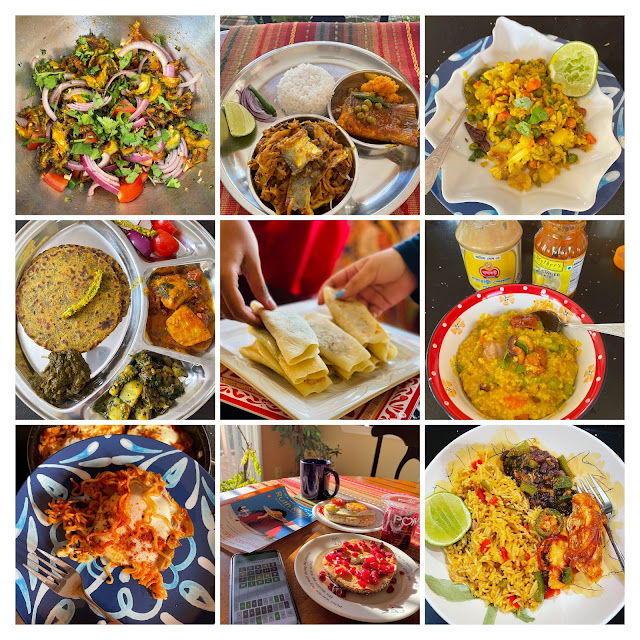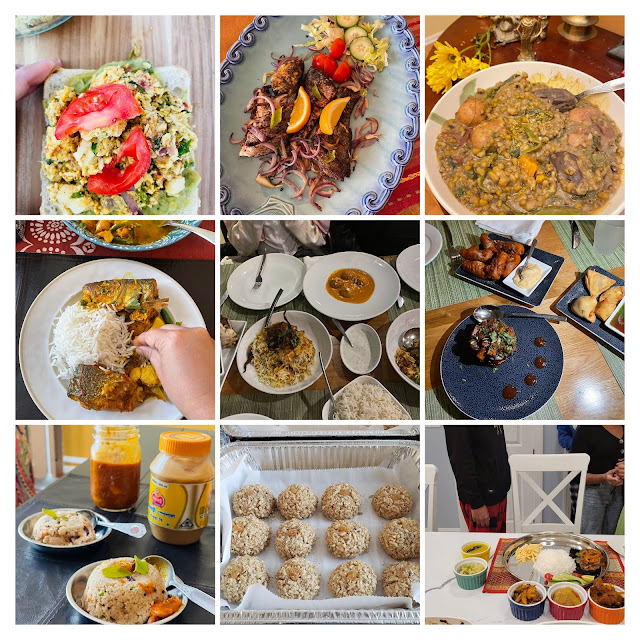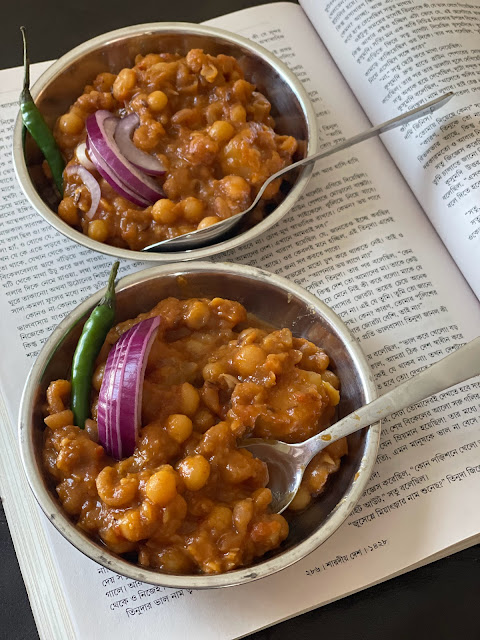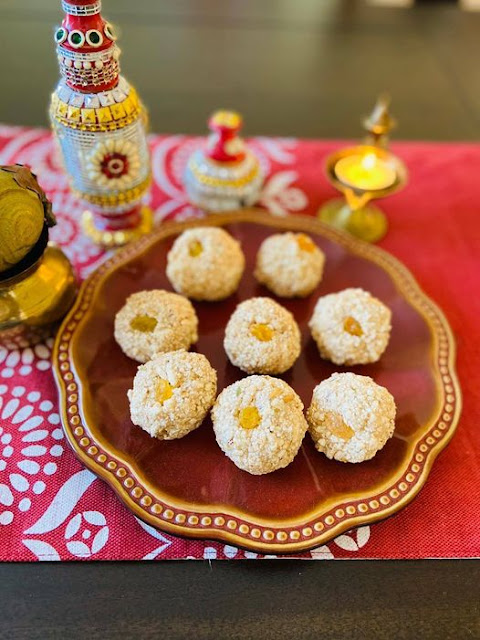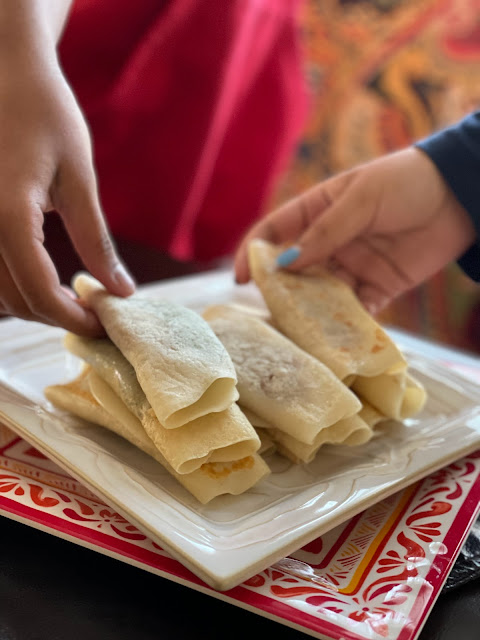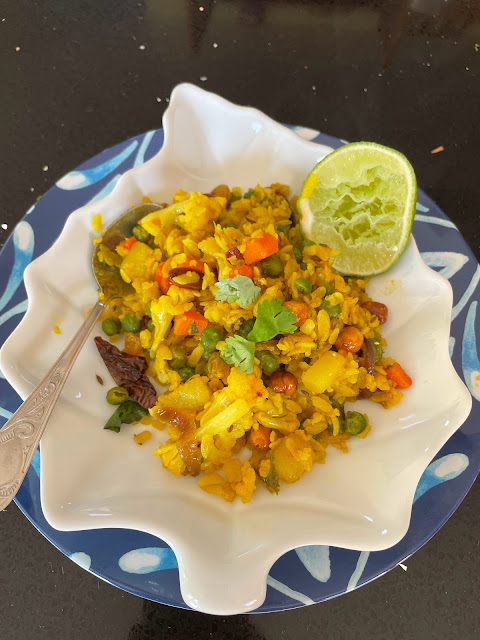Beginning of this last week of 2022, I was in a slump. Everything was fine but I was feeling a lack of motivation to do anything at all. I had this feeling that I was always running around and rushing without achieving anything substantial or even enjoying the process.
This is when I saw a blog friend Balaka's post after along time. I went to her blog to read her Gratitude post but ended up reading again and again this one. if you are young with a dream to change the world you might find it ridiculous but at this point of my life it touched a chord. I texted her about the post and she told me "Je bhaabe ja hochche...seibhabei ta howar...tai beshi bhebo na".
Whatever is happening is how it was supposed to happen all along...don't think too much.
Accept.
I am going into the New Year with a hope of being more accepting. I have absolutely no reign on anything in this universe except may be on my own mind. Rest whatever is happening follows the law of nature and all I can do is trust the Universe to guide me along.
On my part, what I could do is look back and be thankful for the year that was. So for the last two days, I dug through the food photos, and went through them month by month recalling the stories and incidents around them. I skipped all the sad parts, the not-so-great parts and I still had a year worth of delicious food memories.
I hope the same for the next year and the next and I hope the same for you too.
January 2022
When I browsed through my Food Photos, it seems January was the month I cooked most or at least home food was most photographed in this month.
I had made Video Reels for Bitter Gourd Kismur, Chirer Pulao, Maggi Shaksuka, Patishapta with both sweet coconut stuffing and savory green peas stuffing, and Ven Pongal
The kids loved the Spanish Rice and black beans I made and I became a fan of Bagel with peanut butter and pomegranate seeds
.
February 2022
February saw me buying a lot of this fish called Branzino from Costco. I made Branzino in the Airfryer with Chettinad spices and then I made Maacher Jhol with Branzino. Like every year, I made Dida'r Gota seddho around Saraswati Pujo. I also made Joynagar er Moa for Saraswati Pujo.
I think I tried the TikTok trend of grated egg sandwich, did not like it and so made a spicy egg salad version and piled it on avocado toast.
For my birthday, my family took me to see Lion King and we had dinner at this Indian restaurant called Saar. The two things I distinctly remember from that restaurant is the Kathal/Jackfruit Biryani and the Shakarkand ki Chaat, both very new and very delicious.
One of my friend cooked a huge meal for me as a birthday treat and another made paayesh, it was so very special.
March 2022
In the later half of this month there was lot of partying, eating out and delicious food. Looks like I didn't cook much or maybe didn't take photos of food I cooked. Loved the birthday cake made by @mybakebar.
I see I made Paurutir Doi Bora, Sabudana Khichdi/Pulao and a donburi bowl meal
April 2022
This was the month, I finally went to India. My original trip was planned for February but that trip had to be canceled and so April was when I finally reached Kolkata.
When I go home, there are few food items I tend to stick to. With little variation, I eat and order the same things every year. The first meal was no doubt "Ma er haath er maacher jhol" - a light, soupy fish curry with potatoes and Potol.
I had my usual fare of food ordered from 6 Ballygunge Place, Biryani and Chicken Roll from Shiraz and Momos from Momo I am. This time I also ordered and loved this Bhetki Fish Fry with bits of shrimp in it aka Bhetki Chingri melbondhon – a bread crumb coated bhetki and prawn filling cutlet, from Koshe Kosha.
Among the new cafes and restaurants in Salt Lake and New Town area, I loved Verandah cafe where we had a good adda with friends over Aam Pana, Gandharaj Lebu Julep, Chingri r Chop and Mutton kababs...pure bliss🥰. My cousin took me to a cool Vietnamese place with great pho and momos.
At my in-law's place had Bel er Paana after many many years and from my Father's favorite mudi'r dokan I got bakery biscuits flavored with Nigella seeds.
Of the things I cooked this month but posted later , Chicken Yaktori and Chingri Malaikari with the prawns straightened with toothpick, are the two special ones

